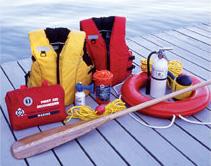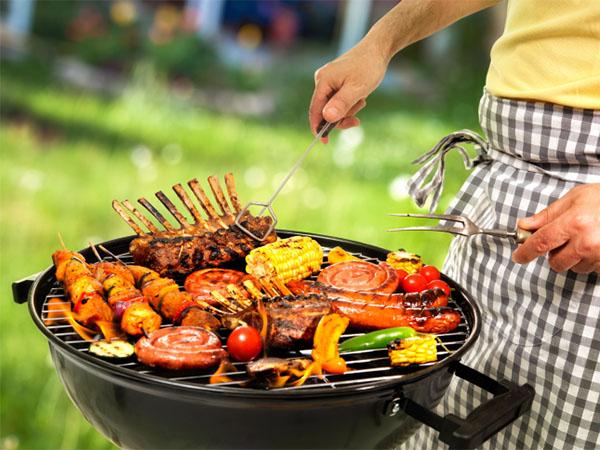 |
 |
DID YOU KNOW?
CONTACT LENSES IN THE WORKPLACE

The SafetyNet team recently came across a part of our legislation that we thought we should share as a reminder, because it's not often talked about. If you stumble upon safety legislation that you think is interesting, little known, or you need clarification on, send us an email; we'd be happy to discuss in future issues of SafetyNet!
These days, contact lenses are a very common way for people to correct their vision. They're convenient: they do not slip down your nose, fog up, or get misplaced once you put them on, and sunglasses, safety glasses, or safety goggles can be easily worn over them.
However, did you know that if you work in an industry where you are required to wear an eye or face protector, the OHS Regulations state that contact lenses are not to be worn? (See OHS Regulations NT and NU, s.97 (4).)
While you may think it okay to wear personal protective equipment (PPE) over your contact lenses, wearing contact lenses can be a hindrance should an accident occur. Damaging your eyes while wearing contact lenses may result in prolonged exposure to the hazard and increased risk for your eyes due to the fact that you must remove the lenses before you can receive first aid treatment.
To access the Occupational Health and Safety Regulations for the Northwest Territories and Nunavut, visit our page on Safety Legislation.
|
|
WHAT'S NEW
In this month's round-up, we introduce two new codes of practice, as well as remind employers of other safety resources available to your workplace.
Codes of practice provide practical, step-by-step guidance on certain topics to help employers and workers understand and meet safety standards required by our legislation. We are continually releasing new codes. To learn more, see our Codes of Practice page.
NEW CODE OF PRACTICE: OHS PROGRAMS
Developing an occupational health and safety program for your workplace may seem like a daunting task, but we are here to walk you through it. Our new code of practice on Occupational Health and Safety Programs will guide management through the development of a safety program tailored to the needs of your workplace. In this code of practice, you will learn:
- What an OHS Program is and how it is beneficial to your workplace;
- How to develop your own health and safety policies;
- The responsibilities of managers, supervisors, and workers within the OHS Program structure;
- Hazard identification, assessment, and control;
- How to develop an Emergency Response Plan; and
- How to deal with incidents and conduct investigations.
NEW CODE OF PRACTICE: CAMP SET UP AND MAINTENANCE

The Camp Set Up and Maintenance code of practice is applicable to any employer who requires the setting up of remote worksites in the course of their work. It provides guidance on camp set up and management best practices, and offers relevant links and resources. This code of practice discusses:
- Selecting appropriate project or camp sites, and the time required to secure permits and permissions before sites open;
- Factors to consider, such as operation time needed at camp site (seasonal/year-round), duration (temporary/permanent), size of camp needed, and access (transportation needs);
- Regulations, hazards, and risks employers should consider in the planning stages;
- Health, safety, and environmental concerns that will affect the safety of your camp set up; and
- Proper arrangements required for working, eating, and sleeping spaces.
WORTH IT! POSTERS FOR YOUR WORKPLACE
If you follow us on Facebook or Twitter, you may have seen these already, but did you know that we can send you printed posters for your workplace?
As we've mentioned in previous issues of SafetyNet, workplace safety is worth it, and it never hurts to remind your workers why they should practice safety at all times. These posters are available in English, French, Inuktitut, and Inuinnaqtun. Contact us for a full set and include your mailing address.
|
|
|
SEASONAL SAFETY TIPS
Summers in the North are often too short, so Northerners know how to make the most of them. Whether you are enjoying yourself out on the water, in the bush, or at a campsite with friends and family, you should be prepared. Safety is everyone's responsibility, at home and at work.
IN THE BUSH: HIKING / GATHERING SAFETY
While we are relieved that the missing mushroom picker in Yellowknife emerged safe and sound in early July, it brings to mind the fact that anyone hiking in the bush should always adhere to the following safety tips:
ON THE WATER: BOATING SAFETY

- As is the case when you travel anywhere, let someone know before you go boating where you're going and when you expect to return.
- Know where you're going: learn the area, familiarize yourself with landmarks and local hazards.
- Plan ahead and be prepared: check the forecast, factoring in temperature, wind, and wave height (Environment Canada's Marine Forecasts can help). Pack and dress accordingly.
- Pack enough supplies for the duration of the boat trip, along with emergency supplies.
- Water safety: besides having enough PFDs (personal flotation devices / lifejackets) for each person on board, ensure that each PFD is working and fits the person it is meant for. Ensure everyone on board wears them at all times - do not assume that you will have time to put one on in an emergency.
- Safety equipment: know where extra PFDs are stored on the boat, as well as other safety equipment, such as paddles, a whistle/horn, rope, a bailer. Familiarize yourself with how to use the safety equipment you have.
- Know your boat and how to operate it. Inspect it before you head out to ensure it is in proper working order. Carry extra fuel, a spare battery, and a backup motor.
- Have a means of communication, whether it is a satellite phone or a marine radio. If possible, have the satellite phone on your person at all times - you may not have time in an emergency to go find it.
- Know how to swim and ensure you know who on your boat does not know how to swim. Everyone should be wearing lifejackets, but it is even more imperative for those who cannot swim.
FIRE SAFETY
At home:
- Practice fire safety plans and preparedness with your family. Establish a meeting place for everyone in the event of a fire, and run fire drills with your children.

- A barbecue grill should never be left unattended. Before operating a barbecue, ensure it is in good working order, that you know how to operate it safely, and that you keep a bucket of water close by. Keep the cooking area clear of foot traffic, children, and pets, and make sure propane tanks are stored in a safe place.
- Have a fire extinguisher; you never know when you might need it. Educate all members of the household on how to operate it, and where it is stored. Have it checked once a year.
- Clean out your dryer lint - it is extremely flammable. Clean the dryer ducting all the way to the outside of your home at least once a year.
- Do not throw out your cigarette butts into your planter pots; plant soil contains combustible materials. Keep a non-combustible container for cigarettes.
At a campsite:
- Put out your fire completely before you leave the campsite. Do not leave your fire unattended.
- If you have a trailer at your campsite, keep any combustibles or propane tanks away from the area of the camp fire.
- Have a functioning fire extinguisher or a bucket of water handy.
In the workplace:
- While leaving doors open on hot days may be tempting, fire doors in your office building have a purpose and should be kept shut. They keep stairs free of smoke and flames in the event of a fire and offer safe passage for everyone to get out and so firefighters have a way in. Keep them closed. If you see any that are propped open periodically, report it to your OHS committee or your safety representative, so that they can bring it to the attention of your building manager.
- Know where the fire extinguishers are located in your workplace, and how to operate one. Regularly check your fire extinguishers and test them every year.
|
|
|
OFFICE CLOSURES
WSCC offices are closed
for the Civic Holiday on Monday, August 7, and reopen on Tuesday, August 8 at 8:30 AM.
To report a serious workplace injury or incident, call 1-800-661-0792.
|
 |
This information will soon be available in Inuktitut and Inuinnaqtun on our website.
wscc.nt.ca / 1.800.661.0792 * wscc.nu.ca / 1.877.404.4407
|
|
|
|
|
|
| |
|
|
|